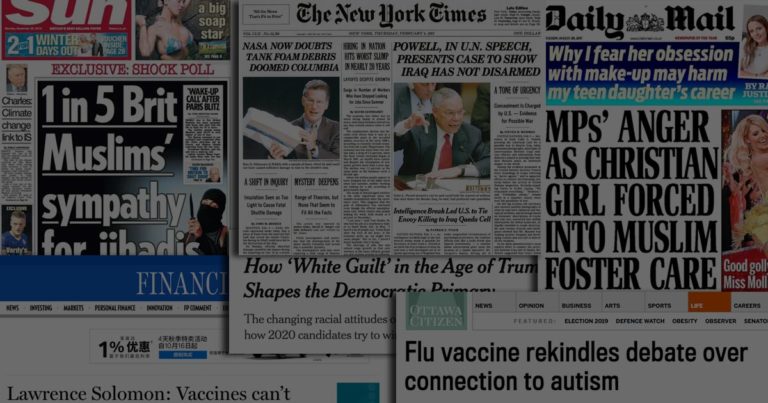Understanding bias
I see bias everywhere. Yes we all struggle with our biases. I wish the reporters, editors and owners at the Globe and Mail would own up to theirs.
There’s bias in the conversation our biased reporter has with his biased editor, bias in the call list he develops for his story, bias in his choice of events to go out and cover, bias in the details he writes down at the event, bias in his lead paragraph, bias in the last paragraph, bias when his editor cuts a graph. The headline someone else writes for him— that has bias. There’s bias in the placement of the story.
But it’s not simply the personal bias of the reporters and editors that Rosen mentions here. It’s also the systemic bias of the institution. What stories make you popular? What stories get you hired? What stories get you promoted? What stories keep you in business? What stories get you sued?
Don’t miss a dispatch!








…to explore these questions you pose I find myself considering what contributes to how mainstream and “alternative” media conceptualizes and defines “a story”. The number of words, acceptable/unacceptable vocabulary and assumptions about what is relevant, real and true… and assumptions about what engages people emotionally – what is sad, tragic and outrageous. For example, although I haven’t done so to any great extent, it has been interesting to observe how north amercian mainstream media has treated what is commonly called “polyamory” over the last five-or-so years. Framing has transformed from “look at the freaks” to a Showtime reality-TV series in a very short period of time… And, yes, I think it could be argued that the reality-TV show is just a beautified version of “look at the freaks”… I have a list on my wall of the “7 kinds of stories” such as voyage-and-return; rags-to-riches; and slay-the-monster. I wonder if there is a similar list for journalism?
Yeah good questions. One way I conceptualize the acceptable vocabulary and assumptions is by analogy to the Overton Window. The window of acceptable political discourse is very much related the window of acceptable ‘journalistic’ discourse but they are also meaningfully different. I am curious to know what all seven stories are? And what is the context for these archetypes?
I don’t remember their source, the list is on a sticky on my bulletin board:
voyage & return
rebirth
rags to riches
comedy
tragedy
slay the monster
the quest
:)
Okay, that is helpful. Also, I just did a little reading about this story archetype stuff, and have a better understanding of it all. So some brainstorms for creating a basic taxonomy, or finding the archetypes, of journalism stories include:
I can’t emphasize enough that these are just brainstorms. I’m not sure if these really capture the spirit of the archetypes. I’ll try again.